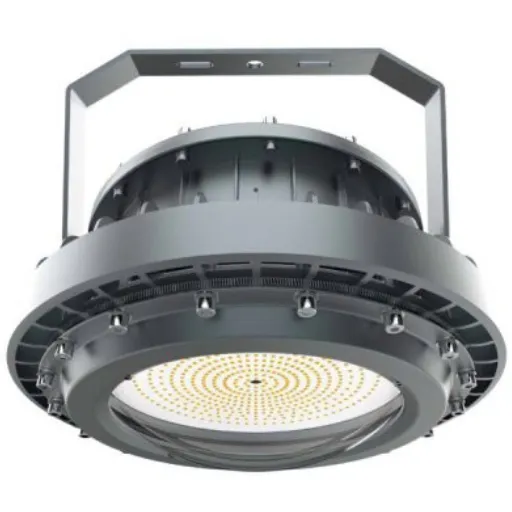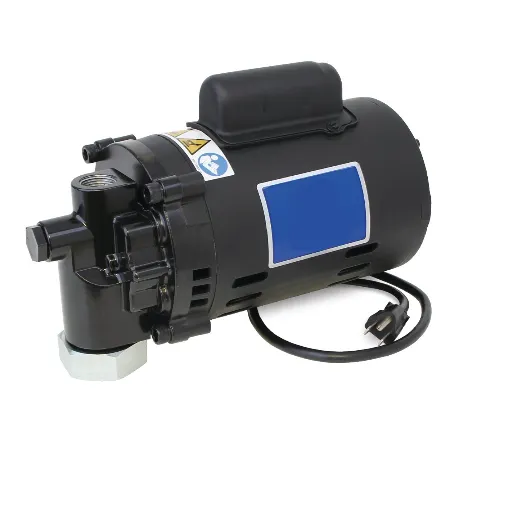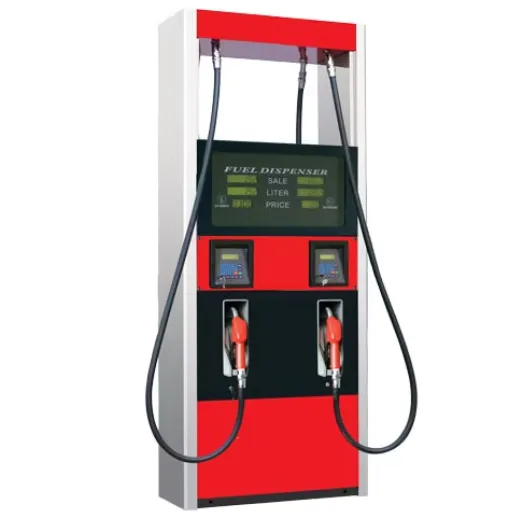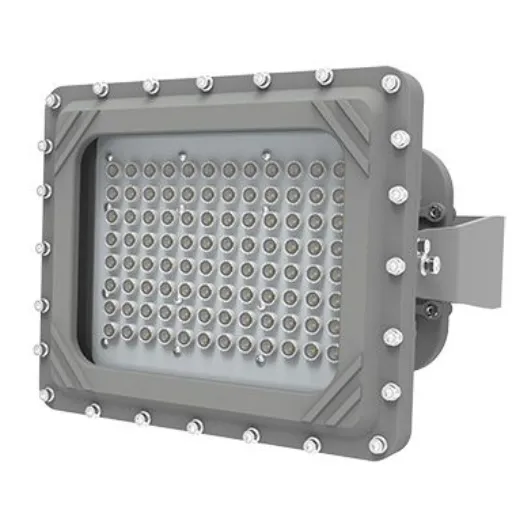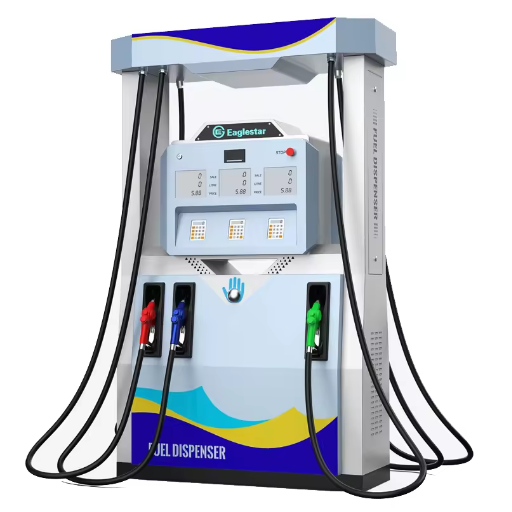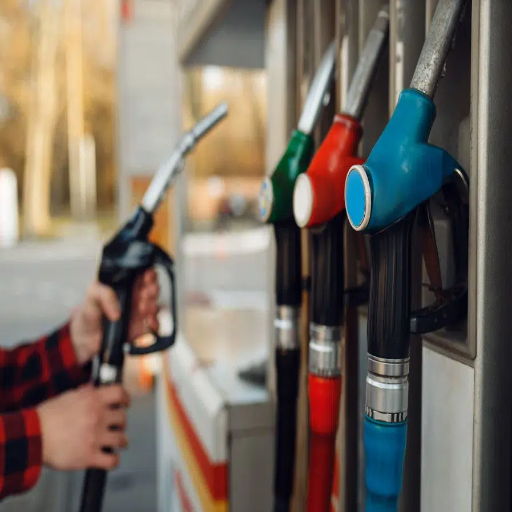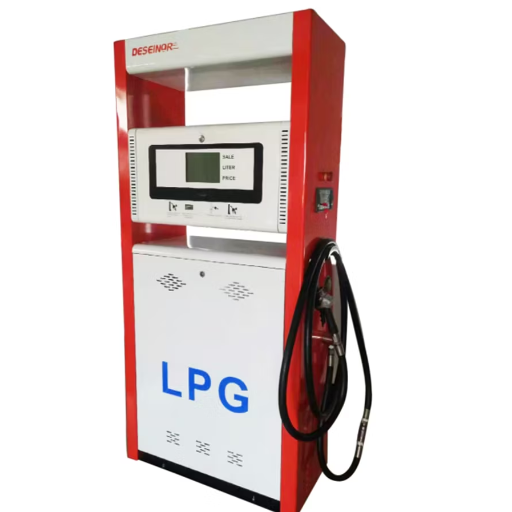Fuel and gas dispensers are often treated as synonymous terms; however, they differ quite significantly most of the time. This distinction becomes pertinent, especially when one is involved in the automotive, fuel service, or retail industries. This blog post explores the distinctions between fuel and gas dispensers and explains their distinguishing functions, features, and uses. Whether you’re a business owner eager to install a new fuel dispenser or perhaps just interested in knowing a little about these systems, this guide will help set the record straight. Time to look into the subtle distinctions of these fundamental units and see how they relate to the different fuel types and functions.
What is a Fuel Dispenser?
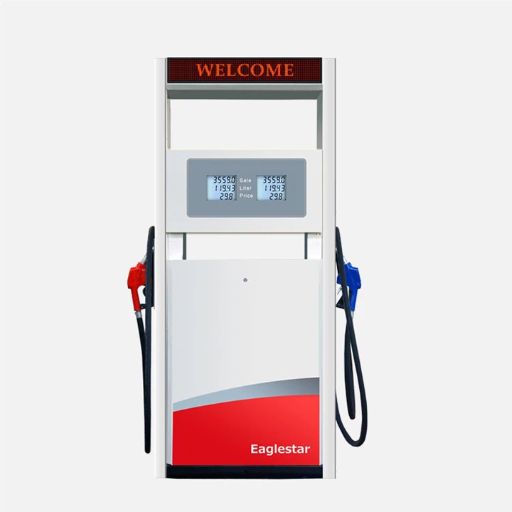
A fuel dispenser is a pump at filling stations that pumps fuel like gasoline, diesel, or other types of liquid fuels into a vehicle or any container. It has a nozzle, a pump, and a meter that measures and delivers the exact amount of fuel required. Fuel dispensers have huge applications in transportation and industrial sectors and are meant to be efficient, safe, and reliable during refueling.
How does a fuel dispenser work?
The fuel dispenser mechanism works on a combination of mechanical and electronic systems that ensure precise delivery and correct measurement of fuel. The process starts with initiating the pump, either manually or through the payment interface, which sends a signal to the pump motor to lift fuel from the underground storage tank. Once engaged, the dispenser transfers fuel through the pipeline by suction or submersible pumps.
Inside the dispenser, a flow meter measures the volume of fuel flowing through to maintain accuracy. Contemporary dispensers use state-of-the-art metering technologies, such as positive displacement meters or turbine meters, to measure the quantity of delivered fuel and display it on digital or analog interfaces. Vapor recovery systems are also fitted in dispensers to lessen fuel vapor emissions, protect the environment, and conform to regulatory requirements.
Fuel dispensers have evolved to allow IoT connectivity for real-time remote monitoring of fuel level, dispenser performance, and transactions. For example, specific systems can relay data at up to 1.5 Mbps, greatly enhancing efficiency and operational management. Through such advancements, fuel dispensers have become a critical tool for assuring health, safety, and green refueling worldwide.
Components of a fuel dispenser
A fuel dispenser is more than just a nozzle on a pump; it is a coordinated assembly of parts that moves liquid from a tank into a customer’s car quickly and carefully. The hydraulic system sits at the heart of the dispenser and includes a motor-driven pump, a set of valves, and a mechanical meter. Together, they decide how much fuel flows and record the quantity to the penny.
Fuel travels along a flexible hose and exits through a hand-held nozzle that snaps shut when the tank’s filler neck is full. Most modern nozzles also have a breakaway coupling hidden a few feet up the line; yank the hose hard enough and that coupling separates, leaving the nozzle stranded rather than spilling gasoline on the pavement.
A bright digital display walks customers through the sale, flashing the price per gallon, total cost, and even the gallons delivered in real time. Circuit boards tucked inside the dispenser handle the logic while keypad taps or touch-screen pokes relay user intent.
Before liquid reaches a waiting car, it passes through one or two spin-on filters and a flow regulator that smooths pressure swings, ensuring nothing abnormal touches an engine. Advanced models layer on a vapor recovery unit that traps escaping fumes and sends them back underground, cutting the clouds of gasoline vapor that once bloomed over every busy forecourt. Altogether, these parts fuse into a machine that meets frantic commuter demand and rigorous safety tests.
Types of fuel dispensers
Fuel dispensers can be sorted by their work, the technology inside them, or the places they serve. Each grouping highlights a different set of operating strengths.
Mechanical Fuel Dispensers: A mechanical unit relies on gears and levers. It shows gallons or liters through simple dials, not screens. Though builders stopped making them in most cities, a few rural stations still welcome their bulletproof simplicity. When frost or dust knocks out electronic circuits, a brass rotor keeps counting.
Electronic Fuel Dispensers: An electronic pump has a microprocessor tucked beneath its skin. It records millisecond volume and flashes the price to the motorist before the nozzle leaves the cradle. Card readers and fleet tags snap into its logic board like auxiliary boosters. Recent surveys peg this high-tech breed at eighty percent of charts new to metropolitan forecourts.
Multi-Product Dispensers (MPDs): A Multi-Product Dispenser packs two, three, or even four fuel grades into a single frame without forcing customers to pick their poison ahead of time. Operators appreciate that one slender machine opens up valuable square footage otherwise hogged by spare pumps. The machines have sprouted in everything from highway corridor plazas to urban fleets, a running nod to flexibility under tight space rules.
High-Flow Fuel Dispensers: Picture a nozzle that gorges on fuel like a big rig guzzles coffee; that is a high-flow dispenser in raw terms. It can fling 60 gallons per minute or more at a diesel tank, shaving precious minutes off a bus or excavator refuel. Fleet managers guard the time savings jealously, since every idle minute can ripple through project schedules. The punchy throughput alone justifies the heftier price tag.
Alternative Fuel Dispensers: Stations flirting with tomorrow already house nozzles for CNG, hydrogen, or good-old LP gas, each spitting fuel in its eccentric rhythm. Safety screens, pressure gauges, and even custom fittings protect both staff and the stalks of public’s nerves. Market analysts tally double-digit annual growth for these units, driven by cities that refuse to budget another fossil-fuel bus. Eco-minded fleets see no sign that the momentum will slow down.
Smart Fuel Dispensers: Bright fuel dispensers that run on IoT tech are not just talking to the cloud; they stream live data back to anyone who cares to listen. Operators can peek under the hood and see exactly how much gasoline is left in each tank, decide when the filter needs a change, and ping motorists through an app when pump queues ease. That constant feedback cycle shrinks downtime, boosts throughput, and- guess what- fits snugly into the digital overhaul that so many energy firms are chasing.
Different makes and models of dispensers exist because no two fueling sites act the same way. A highway plaza, a mining camp, and a downtown food-delivery hub each want separate bells and whistles, so choice becomes a silent choreographer of distribution. How many grades of diesel, whether contactless payment is a must, and, yes, the local power supply, all steer which pump finally gets plumbed in.
What is a Gas Dispenser?
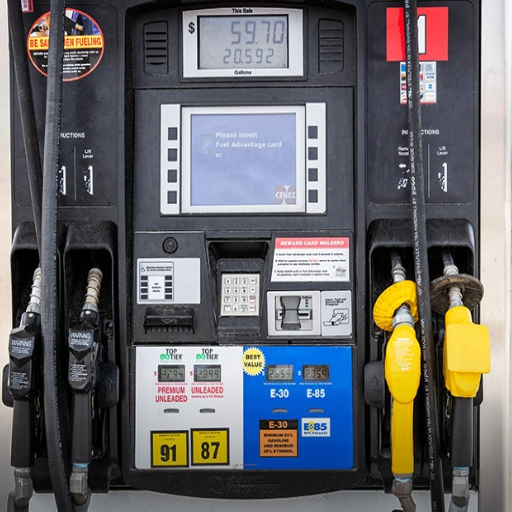
In gas stations, a fuel dispensing system pumps fuel such as gasoline or diesel into vehicles. It has nozzles, hoses, and controls to ensure accurate and efficient fuel delivery. Modern fuel dispensers have digital displays that provide information on the fuel’s quantity, price, and payment instructions, making operation convenient for both customers and station operators.
How does a gas dispenser operate?
The apparatus for dispensing gas is a set of mechanical and electronic systems working in tandem to dispense fuel efficiently and safely. When the nozzle is inserted into the vehicle’s fuel tank and the handle is pressed to allow dispensing, the pump is activated, drawing fuel from the station’s underground storage tank through a pipeline. A flow meter inside the dispenser measures the amount of fuel to be transferred, depending on the price and volume.
Technologies such as electronic sensors, which sense when the fuel tank gets full and terminate the fuel flow to prevent overfilling, are prevalent in gas dispensers. Also, most dispensers come with vapor recovery systems to lessen environmental degradation by reclaiming fuel vapors that would escape during refueling. Some of the newer dispenser models even include contactless payment options and real-time monitoring solutions that allow stations to track fuel levels and dispenser performance for operational optimization.
For reference, literature states that the usual flow rate of gas dispensers at truck refueling stations is about 40 to 120 liters per minute for regular vehicles and around 450 liters per minute for heavy-duty vehicles. The systems tested are highly judicially calibrated to meet the accuracy requirements and reduce either errors or inefficiency during use.
Key features of a gas dispenser
High-Precision Metering: State-of-the-art metering technology now resides in most retail fuel heads, letting operators record exactly how much gasoline or diesel leaves the nozzle. Digital calibration routines are routinely audited against hard metrics, so only tiny deviations slip through.
Durable Construction: Every casing, valve, and mounting bracket is forged from stainless steel or composite alloys, shielding the machine from salt, humidity, flame, and everyday vehicle impact. Dispensers interrupted by winter ice or summer sun still work without hesitation.
User-Friendly Interface: Bright LED readouts, responsive touch screens, and swift language toggles are within easy reach of a driver’s glare. People accustomed to smartphones discover that refilling the menu is no more complicated than ordering takeout online.
Integrated Safety Features: An automatic cutoff shuts off when a hose or nozzle senses an unusual drag. At the same time, backpressure regulators and vapor recovery valves tame leaks no one can ignore. Once these redundant systems are in line, operators can almost forget about fires.
Advanced Payment Options: Tap-and-go cards, digital wallets, and older magnetic strips slide into one jam-proof card reader, shaving seconds off each transaction. Lane build-ups shrink when billing begins before the tank is even half full.
Data Connectivity and Monitoring: Tiny signal chips breathe life into lifeless steel, sending fuel tallies, part wear codes, and software flags back to a cloud console every sixty seconds. A fleet manager glances at a single dashboard and knows which unit needs attention before an angry driver appears.
Such capabilities have turned the humble pump into a mobile sensor farm that is as prompt, cautious, and accommodating as the best convenience store clerk. Customers fill, pay, and move on with scarcely a thought for the machine itself.
Various types of gas dispensers
Fuel dispensers are not monolithic; their architecture has diversified to meet the field’s distinct chemistry, pressure, and regulatory demands. A quick survey reveals several principal configurations.
Petroleum dispensers remain the most familiar sight at roadside service stations. They meter gasoline or diesel through a rotating pump and a sequence of internal swivels and valves. Payment terminals now sit within arm’s reach, allowing drivers to swipe a card while the nozzle hangs in the tank.
Compressed-natural-gas dispensers resemble small, stout fire-hose cabinets and operate at pressures far above those of petroleum equipment. Their gauges and emergency valves are overbuilt for safety, yet users praise the rapid-fill capability they enable in fleets and municipal buses.
Liquefied-petroleum-gas dispensers usually feature a simple, cruciform steel body painted in bright colors so that till operators can distinguish them at a glance. Autogas taxis and specific forklifts rely on these cabinets for propane or propane-butane mixes that vaporize nicely at ambient pressures.
Dedicated hydrogen dispensers are still a marvel, incorporating temperature, flow, and pressure regulators that are within thousandths of an inch of tolerances. One miscalibration could lead to disaster, so many jurisdictions require yearly calibration by credentialed technicians.
Multiproduct dispensers, often called MPDs in catalog shorthand, bundle two or three separate fuel paths into a single pedestal. With just a toggle of the rotary selector, a driver can switch between regular gasoline and a renewable biofuel, freeing up valuable concrete pad space at congested terminals.
Automotive fleets demand more than a one-size-fits-all pump, so designers craft nozzles that meet the distinct pressure, flow rate, and connector standards of gasoline, diesel, or compressed gas drivers. Because a minor mismatch can stall a fill-and-fill, seals and interlocks double-check every step while user screens clarify pricing, discounts, and nozzle readiness. Shift the calendar forward one quarter, and the station techs still tinker with bigger readouts, faster transients, or cloud-linked diagnostics that seemed experimental only months earlier.
Comparing Fuel Dispensers and Gas Dispensers
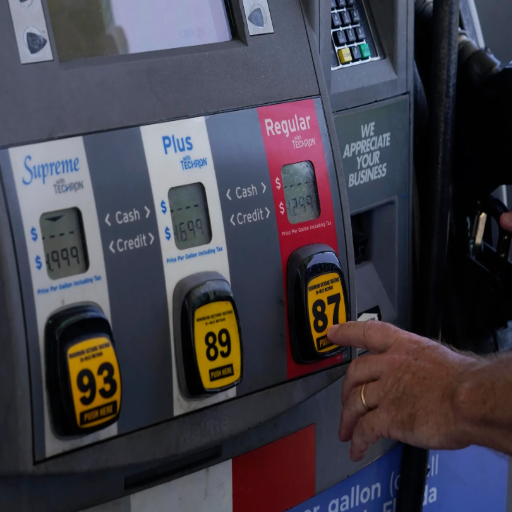
Fuel and gas dispensers are alike in providing fuel to vehicles, but are distinguished by the fuel type they handle and their design features. The term “fuel dispensers” can be used interchangeably with “gasoline pumps,” given that any fuel, such as gasoline, diesel, biofuels, or even hydrogen, can be dispensed. Conversely, gas dispensers like CNG or LPG are usually designed to dispense gases. A fuel station chooses one or the other depending on the types of fuels it provides and its customers’ fueling requirements. Both are focused on the safety, ability to dispense fast, and ease of operation.
Differences in fuel dispensing mechanisms
Liquid fuel dispensers, such as those for gasoline and diesel, work on a pump system, moving the fuel from an underground storage tank into the vehicle’s fuel tank. Typically, the dispenser features metering units that measure the exact quantity of fuel dispensed to ensure that customers get their dues from the sale. Multi-product dispensers are an advanced design, where a single unit can cater to several types of fuel, thus saving space and enhancing the functionality of a fuel station.
Gasoline, CNG, and LPG dispensers utilize an inseparable working mechanism. Meanwhile, CNG dispensing stations rely on high-pressure compressors to fill the vehicle storage tank while monitoring the pressure to avoid overfill. Participating in this pressure up to 3,600 psi (pounds per square inch) requires using space-age materials and safety precautions. While LPG dispensers may employ a vapor recovery system and specially designed nozzles to deal with the liquid-to-gas conversion, CNG and LPG filling times can also differ from the traditional liquid-fuel filling due to pressurization and handling needs.
The most recent data show that CNG fueling stations are gaining more support as an alternative to conventional liquid fuel stations, with Europe and Asia leading in the number of operational units. Therefore, the worldwide adoption of such systems speaks to the growing focus on sustainability. Other fuel dispensing systems are now equipped with digital interfaces to help improve the user experience and work toward zero emissions at refueling. The advances discussed focus on fundamental contrasts amongst the storage, measurement, and delivery procedures for liquid and gaseous fuels to a vehicle.
Variations in fuel flow and pump efficiency
Fuel flow rates and pump efficiency vary based on the fuel type, the dispenser’s design, and environmental considerations. For example, conventional liquid fuel pumps, such as those for gasoline or diesel, operate at flow rates of 5 to 10 gallons per minute for passenger vehicles. In comparison, high-flow diesel pumps for heavy cars may go up to 60 gallons per minute. Handling pressurized gases becomes more challenging for the systems dispensing gaseous fuel like CNG or hydrogen, resulting in lower flow rates between 1 and 3 kg per minute.
Now comes pump efficiency, which is determined by mechanical factors, but maintenance and calibration of the system also play important roles. For liquid fuels, precise metering is applied to guarantee delivery accuracy to minimize wastage and alternative non-compliance penalties. The introduction of variable-speed motors and new flow meters vastly increased the efficiency in pump operations by reducing energy consumption. Continuous improvements in compression technologies have made gaseous fuel systems more reliable and efficient, even though they require greater energy usage to compress and cool a gas before its dispensing.
Data demonstrates continuous improvement in fuel systems’ speed and accuracy. Bright dispensers integrating IoT-based sensors and control mechanisms ensure that they operate under an ideal set of conditions that allow a dynamic adjustment of flow rates based on vehicle type and tank conditions. These enhancements help expedite a refueling system that can flexibly cater to the diverse needs of an ever-increasing array of vehicles, from passenger to commercial vehicles, while striving to be more energy efficient.
Cost and maintenance considerations
Both costs and maintenance are key metrics of an appraisal of modern refueling systems. By way of a few examples, technology variations between IoT-enabled bright dispensers and traditional ones show a higher capital cost for advanced systems, which usually vary between $10,000 and $50,000 per piece, depending on the level of technology being used. They typically offer greater savings in the long run. Improved energy efficiency and fuel metering prevent unnecessary waste, thus reducing operational costs.
The integration of modern features also affects maintenance costs. Bright dispensers with real-time monitoring can alert operators to incipient problems before they become costly repairs, limiting unnecessary downtime. According to reports, predictive maintenance lessens maintenance costs by 20 % to 30%. Also, manufacturers are focusing more on modularizing these systems to ease the repair and replacement of parts, thus lengthening the lifespan of the entire system.
Compliance with environmental and safety regulations is an added concern. Systems upgraded for compliance can negate expensive fines and provide for sustainable operations, justifying the initial investment. Decreased maintenance risk, operational trading, and compliance combine to make these systems a good bargain on the long haul for operators and businesses.
Choosing the Right Dispenser for Your Station
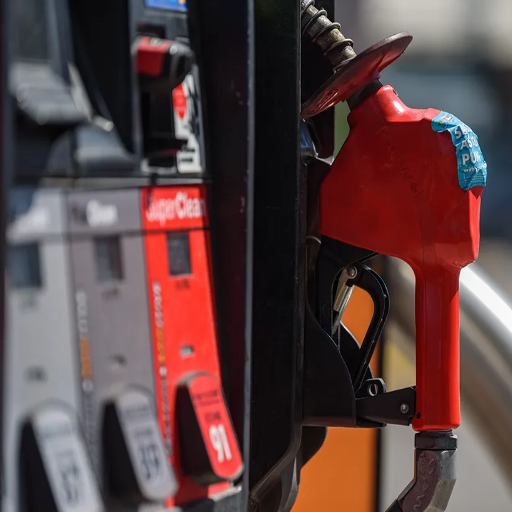
The suitability of a dispenser for your station depends upon three critical factors: fuel compatibility, capacity, and customer convenience. Consider the type of fuel your outlet sells- gasoline, diesel, or alternative fuel- and a compatible dispenser. Using your traffic expectation, choose several gallons per minute that are compatible with your highest pump demand. If anything, stay with the models that are generally easy for the user to operate, with clearly represented display panels. This decision will be in alignment with the needs of your station.
Factors to consider when selecting a dispenser
Choosing the right fuel dispenser starts with carefully reviewing specification sheets, yet practical experience often guides the final decision. Flow rate is at the center of that exercise. Dispensers handling 60 to 80 liters per minute keep loyalty cards humming during rush hour, whereas colleagues who stick to 40 liters per minute suit suburban motorists just fine.
Next comes the question of product mix. Plenty of modern nozzles claim gasoline, diesel, E85, biodiesel, and hydrogen in the forward-thinking outlier. Each grade has compatibility quirks, so purchasing managers must double-check material lists instead of guessing once the tankers arrive.
Payment tech has stepped out of the corner store and into the island. Today, a single dispenser may house magnetic stripe readers, EMV chips, NFC badges, and, further down the road, blockchain sign-offs. That clutter of electronics keeps pedometers in the office up to date and signals when nozzles need attention.
Sustainability lingo pops up in catalogs, yet the meaning varies by manufacturer. Equipment running at lower wattage during off-peak hours or stamped with the latest ISO badge usually costs less power and eases the environmental tally at year-end. Buying crews should fire off follow-up questions instead of waiting for glossy brochures to end the conversation.
Choosing a unit that includes LED lighting or runs on a solar charge is a straightforward way to cut energy use without sacrificing performance.
Taking the time to weigh such features can steer you toward a dispenser that remains dependable, economical, and ready for whatever changes the power grid may bring.
Understanding petrol and diesel fuel needs
Petrol and diesel are two of the most commonly used fuel types, powering millions of vehicles and industries around the globe. Petrol, also called gasoline, is mainly used for light vehicles because it is efficient in spark-ignition engines. Diesel is used in heavy vehicles, trucks, and heavy-duty machines because it offers a slightly higher energy density and fuel efficiency for running relatively long distances.
Globally, the demand for diesel fuel continues to exceed that of petrol: it accounts for approximately 55% of fuel consumption in the transport sector. Countries replete with industrial and agricultural activities tend to be heavy diesel consumers. About 42% of vehicles running on the roads in the European Union are diesel-powered, somewhat more than those running on petrol. Furthermore, diesel engines have a lower carbon dioxide emission per mile than petrol engines, thus being the choice for long-haul transport, notwithstanding their higher nitrogen oxide emissions.
Tricks are now changing due to recent trends and environmental concerns. Many governments and organizations have been working to lessen their dependence on fossil fuels for electric vehicles and biofuel alternatives. One projection states that diesel and petrol would continue to dominate the fuel market worldwide, especially in developing economies. This implies the undying relevance of fuel needs and implications for energy infrastructure from this point forward.
Benefits of integrated fuel pump systems
To reduce manufacturing costs, integrated fuel pump systems combine numerous features that optimize fuel delivery for vehicular and industrial applications, significantly enhancing efficiency and reliability. Thus, fuel delivery precision is the primary advantage: these systems maintain fuel flow for better engine operation and less fuel wastage. In terms of energy efficiency, modern systems also achieve this by switching the integrated pump off whenever its work is not required.
In addition, durability-wise, they offer benefits while reducing maintenance needs. Integrating these systems into one streamlined unit means fewer failure points. Recent developments in fuel pump technology can increase integrated systems’ working life expectancy by about 25% compared to conventional independent systems.
Moreover, integrated pump systems have a heavy bearing on emission reduction. Engines meet ever-stringent emission standards worldwide by burning fuel cleaner, thanks to pressure regulation being the best in class. Some industry papers suggest that vehicles using advanced fuel pump systems can reduce carbon dioxide emissions by up to 15 percent.
Because integrated fuel pump systems are small, they also save space in modern vehicles, allowing manufacturers to improve vehicle design and performance. Their flexibility will also ensure compatibility with alternative fuels such as ethanol blends and biodiesel, further aiding the green energy transition. These benefits thus cast integrated fuel pump systems as essential for technological and environmental advancement.
Common Issues with Fuel and Gas Dispensers
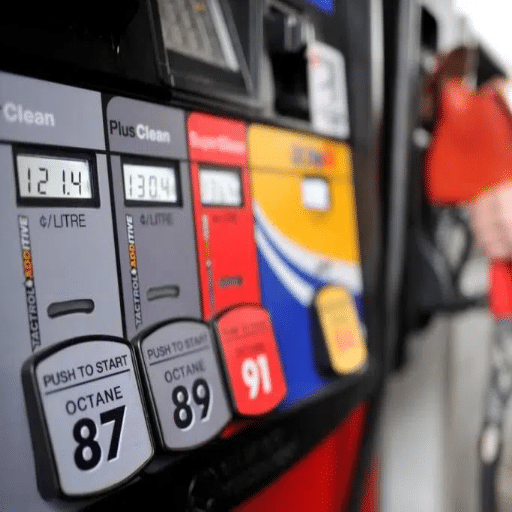
Specific problems usually occur with fuel and gas dispensers, contradicting their placement among highly reliable devices. A common problem is dispenser calibration errors, causing the dispenser to read higher or lower than the actual fuel. Another issue is blocked filters that prevent the free flow of fuel. Wear and tear of mechanical parts, such as nozzles, hoses, and seals, may cause leaks or prevent them from working efficiently. Electrical faults in the control system may disturb the dispenser’s operation. This may affect the user interface or some payment systems. Hence, preventive maintenance should include regular servicing, inspections, and replacement of worn-out parts.
Troubleshooting dispenser problems
The troubleshooter or dispenser is the first candidate to look for visible signs of wear or leaks in the nozzles, hoses, and seals. Check the filters for any clogs. Make sure the dispenser control system is working perfectly. I check for electrical malfunctions if the problem lies with the user interface or the payment system. Keeping these checks under regular review helps me pinpoint all problems before I deal with them.
Regular inspection and maintenance tips
For effective equipment operation, I put it on a maintenance schedule. The setting requires me to check all components for wear or damage and have them replaced whenever such a situation occurs. I also clean the equipment to avoid any accumulation of substances affecting performance, calibrate it from time to time to keep pace with accuracy, and conduct preventive checks so that it does not face any sudden failure. Staying ahead of issues enables me to keep the equipment on track and maintain its utmost reliability.
Preventive measures to ensure dispenser efficiency
An established preventive maintenance plan is imperative to maintain the maximum efficiency of the dispenser. Cleaning dispenser parts, such as the nozzles and the filters, should be regularly undertaken to prevent clogging. Ensure the flow rate is consistent. Inspect electrical connections and mechanical parts for wear and damage at frequent intervals and replace any parts that are found defective. It should be calibrated often enough to maintain proper dispensing accuracy and ensure it is not being misused. Only materials of high quality and compatible with the dispenser will be used to lessen residue build-up and thus increase the life of the dispenser. Maintenance should be recorded, and a schedule should follow manufacturer recommendations to develop a solid maintenance plan to decrease downtime and ensure proper performance.
Reference Sources
1. Consumer Protection Related to Dispensing Pump Manipulation in SPBU (Gas Station)
Frequently Asked Questions (FAQs)
Q: What is the primary difference between fuel and gas dispensers?
A: The primary difference lies in the type of fuel they distribute. A fuel dispenser is a broader term that may refer to equipment distributing various fuels, including gasoline, diesel, or kerosene. A gas dispenser refers explicitly to equipment that dispenses gasoline, commonly known as a gas pump in North America.
Q: How does a gas pump work?
A: A gas pump utilizes a submersible pump located in underground tanks. When activated, the pump pushes fuel through a pipe to the dispenser nozzle, which is controlled by an attendant or a self-service mechanism. A shutoff switch automatically stops the pump once the gas tank is full.
Q: What role does a motor play in a fuel dispenser?
A: In a fuel dispenser, the motor powers the pump, pushing fuel from underground tanks to the vehicle’s gas tank. This piece of equipment is crucial for the efficient distribution of fuel.
Q: Are fuel dispensers and gas dispensers portable?
A: While most fuel and gas dispensers are stationary installations at gas stations, portable models are available for specific purposes, such as temporary fueling sites or remote locations.
Q: How is a fuel dispenser installation inspected?
A: An inspector from a regulatory bureau or agency will evaluate the installation for compliance with safety standards and proper operation. Documentation proving certification and adherence to local regulations is required for approval.
Q: What modifications can be made to a gas dispenser?
A: Modifying a gas dispenser can include installing advanced payment systems, updated digital displays, or improved safety features. However, any modification must comply with stringent safety standards and may require recertification.
Q: Why is the term ‘bowser’ used in Commonwealth countries for gas dispensers?
A: In Commonwealth countries, ‘bowser’ is used interchangeably with gas pump or fuel dispenser. It originates from the name of an early manufacturer of fuel dispensing equipment and has become a common term in these regions.
Q: How do fuel dispensers ensure safety during operation?
A: Fuel dispensers have safety features such as automatic shutoff switches, emergency stop buttons, and stringent safety protocols to prevent hazardous spills and ensure safe fuel distribution during 24 hours.
Q: What is the importance of accurate fuel measurement in dispensers?
A: Accurate fuel measurement is crucial for the distributor and the consumer, ensuring fair transactions and preventing loss. Fuel dispensers are designed to measure fuel accurately, and regulatory bodies often verify this through regular inspections.
Q: How do self-service gas pumps benefit consumers?
A: Self-service gas pumps allow consumers to fill their gas tanks independently, offering convenience and often reducing wait times. This system can also lead to cost savings for gas stations, which may be passed on to consumers through lower fuel prices.

